Remember that trip to the beach where you couldn't quite keep your feet on the bottom? Imagine that, but ten times saltier, and at the lowest point on Earth! That's the Dead Sea for you: a bucket list destination for travelers seeking a truly unique experience.
If you've ever dreamed of swimming in the Dead Sea, this guide is for you. We'll cover everything you need to know to make the most of your Dead Sea experience, from what to pack to how to stay safe while swimming in its unique waters.
Why is the Dead Sea called the “Dead Sea?”
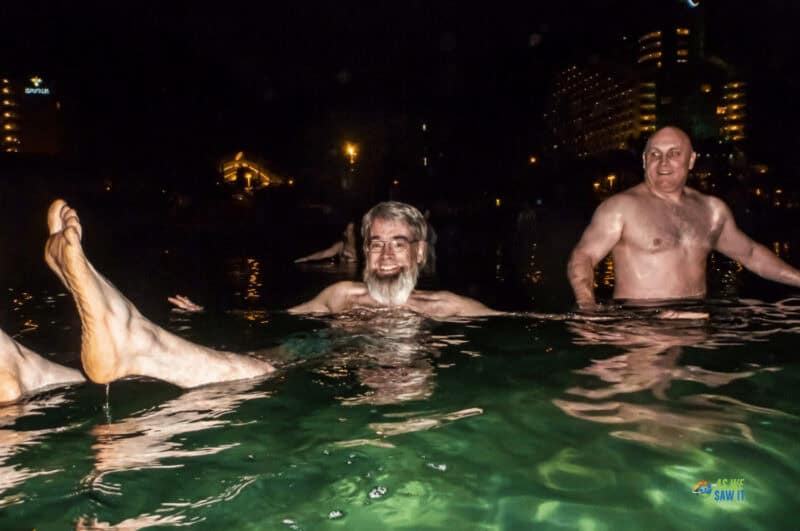
To be accurate, the Dead Sea isn't really a sea. It's a very large, landlocked lake that lies between Jordan and Israel in the Jordan Rift Valley. The name is due to its incredibly high salt content.
Why is the Dead Sea so salty? It's because even though the Jordan River carries minerals into the lake, it has no outlet. The only way the Dead Sea loses water is through evaporation; salt and minerals are left behind.
As a result, the salinity in this body of water is nearly 10 times saltier than regular seawater, clocking in at around 34% compared to the ocean's average of 3.5%. It may not be the saltiest place on Earth, but its super salty environment creates such harsh conditions that it's almost impossible for any aquatic life to survive in its waters.
💡 INTERESTING FACT: While there's no fish or plant life to speak of, they have found some microbial life. Even in such extreme environments, life finds a way!
Benefits Of Swimming in the Dead Sea
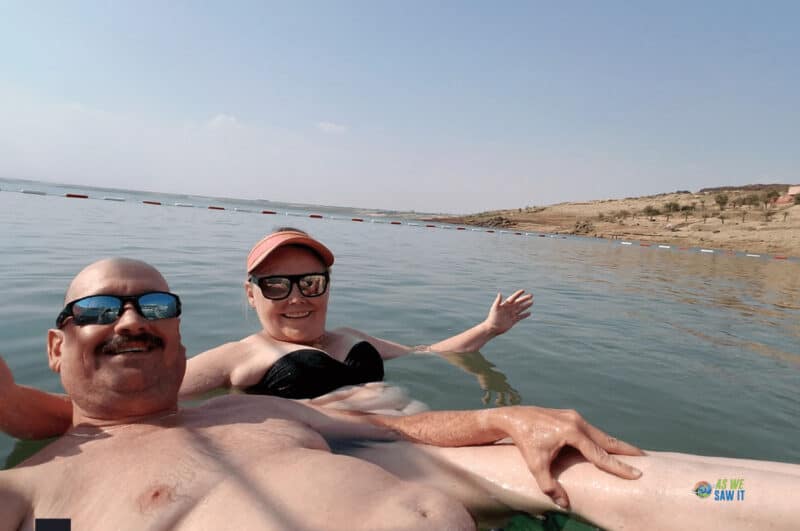
There's more to the Dead Sea than the chance to swim and float in salty water. Here are other reasons it's a good-for-you destination:
1. Improves Skin Conditions
Mud from the Dead Sea contains a high concentration of minerals like magnesium, bromide, and sulfur, which are known to improve skin conditions such as psoriasis, eczema, and acne. Soaking in the mineral-rich waters and applying the mud can reduce inflammation, remove impurities, and promote skin cell regeneration, leading to clearer and healthier skin.
2. Reduces Arthritis and Joint Pain
The buoyancy of the Dead Sea water, combined with its warm temperature and high mineral content, provides relief for those suffering from arthritis and joint pain. The reduced gravity eases pressure on joints, while the minerals stimulate circulation and reduce inflammation, alleviating stiffness and discomfort.
3. Offers Respiratory Benefits
As the lowest place on Earth (-437 meters or -1434 feet below sea level), the Dead Sea has extremely high oxygen levels. The extra O2 makes breathing easier for those with respiratory issues like asthma and COPD, and the dry, allergen-free air can reduce lung inflammation.
4. Helps With Heart Conditions
The unique low-altitude, high-pressure environment combined with bathing in the mineral-enriched waters appears to help certain heart conditions, like congestive heart failure, by improving exercise capacity, heart function, and reducing arrhythmia risk.
5. Provides Relaxation and Rejuvenation
Beyond the specific health benefits, the Dead Sea offers a unique and rejuvenating experience. Bottom line: The serene environment, therapeutic mud treatments, and being able to float effortlessly in the dense waters can promote relaxation and overall well-being.
Plan Your Dead Sea Trip
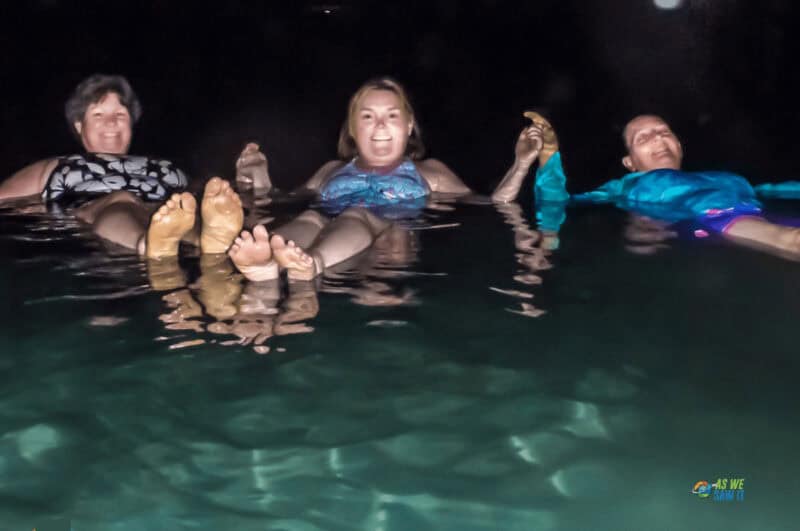
How Much Time to Spend at the Dead Sea
To get the full experience, most people say you should spend at least 1-2 nights there. You'll need enough time to go swimming in the Dead Sea, relax at the resorts, visit nearby attractions, and soak in the unique landscape and atmosphere.
Not to mention all that Arabic food that you'll want to enjoy!
Best Time to Visit
While it's possible to visit at any time of year, the best time to visit the Dead Sea is during the shoulder seasons, which are spring (March-early May) and autumn (October-November). These months offer pleasant weather with comfortable temperatures.
Avoid Summer (June-August), which can be scorching hot; spending time outdoors is unpleasant. Winter (December-February) can be chilly, especially at night.
💡 PRO TIP: If you choose to visit Israel during Sukkot (September/October) or Passover (March/April), expect higher prices at the Dead Sea due to increased demand.
Where To Swim in the Dead Sea: Israel vs Jordan?
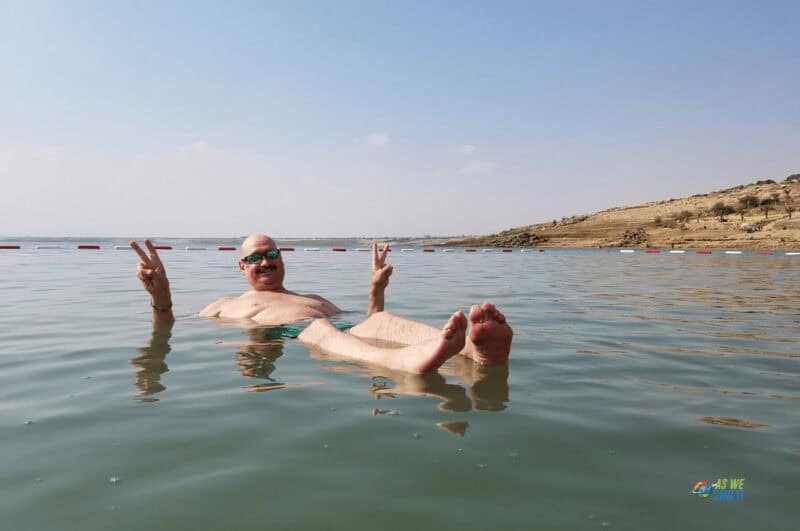
If it helps, we enjoyed our experiences in both Jordan and Israel. Both countries have plenty of places to stay, public beaches, and nearby attractions to keep you happy.
Visiting the Dead Sea in Israel
In Hebrew, the Dead Sea is called Yam HaMelach (the Salt Sea). The top spa resorts on the Israel side can be found in Neve Zohar, near Zohar Hot Spring Beach, and Ein Bokek, a bustling resort town with shops, restaurants, and bars.
How to Get There
Drive. It takes about 1 to 1.5 hours to drive from Jerusalem to the Dead Sea and about 2 to 2.5 hours to drive from Tel Aviv. If you can manage it, you should definitely rent a car and drive yourself, because there some beautiful lookouts and heritage sites that you'll want to check out on the way.
Public transport. Egged operates a daily bus from Jerusalem to the Dead Sea (route #486). You can book a seat ahead of time here, and find timetables and route information here. Tickets are 37.5 NIS each.
Private shuttles and taxis. Shuttles and taxis are the priciest option.
Guided tour. Tours are the most hassle-free, as you'll have a driver plus a professional tour guide. Viator has some excellent options. To get the most for your money, look for tours that include other places too, such as Masada or Bethlehem.
Dead Sea Israel: Where to stay
Three excellent Dead Sea hotels in Israel that have private access to the Dead Sea are:
- $$$ Nevo by Isrotel Collection Check Prices
- $$ Leonardo Club Hotel Dead Sea Check Prices
- $ Rose Dead Sea Neve Zohar Check Prices
You can also stay in a vacation rental through platforms like VRBO.
Visiting the Dead Sea in Jordan
Jordan's Dead Sea resorts are generally more upscale than the ones in Israel, with pristine beaches, plush spas, and amenities like poolside bars and private beach access. The Jordanian side of the Dead Sea seems to offer a more serene experience than you may find on the more crowded Israeli side,.
How to Get There
The Dead Sea in Jordan is easily accessible from the capital city of Amman, located about 55 km away, with a driving time of around 1 hour. Renting a car and driving is allows you to stop along the way and explore at your own pace. Alternatively, you can take a taxi or public transportation like minibuses or buses from Amman.
Dead Sea Jordan: Where to stay
The beaches in Jordan are generally quieter and provide a more relaxed experience. You can easily reach it from Amman, the capital, which is only a 45-minute drive away.
The top Dead Sea accommodation options in Jordan include:
- $$$ The Kempinski Hotel Ishtar Dead Sea Check rates
- $$ The Mövenpick Resort & Spa Dead Sea Check rates
- $ Ramada Resort Check rates
All of these have private access to the Dead Sea. Or, you can stay in a vacation rental through platforms like VRBO.
Inspired? Pin this post and share it with your friends!
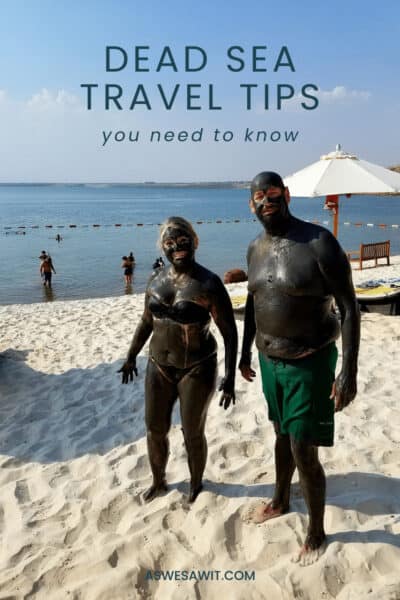
Best Dead Sea Souvenirs
Regardless of where you stay in the Dead Sea Region, don't miss the chance to try some of the Dead Sea products from the region. It goes without saying that Dead Sea spa products make the perfect souvenir.
You'll find an unbelievable variety of beauty and health care products in the shops, especially soaps, soaks, mud masks, and salt scrubs. (As a Boomer, my personal favorite is the Dead Sea mud mask. Not only do Dead Sea minerals detoxify the skin, but they also help to minimize pores and keep fine lines at bay.
If you're looking to try Dead Sea products, three popular brands are Ahava, Premier, and Sea of Spa. You can find them at many retailers, though some products may be cheaper on Amazon.
Dead Sea Safety Tips
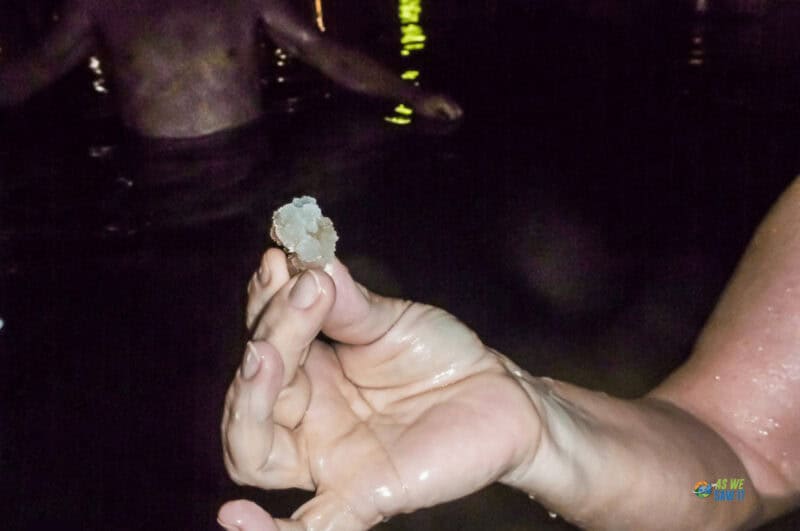
While swimming in the Dead Sea is actually a great experience, there are a few Dos and Don'ts to keep in mind.
Most importantly, you must avoid swallowing the water. The high salt and its mineral content can be harmful, so seek medical attention immediately if you ingest any.
Here are my other Dead Sea tips:
- DO enter the water carefully. Slowly wade into the water rather than jumping or diving in. Use available gangways, ladders, or ramps to make your entry and exit easier and safer and avoid splashing others. We really appreciated that ramp when we found that the bottom was covered in rough salt crystals!
- DON'T try to swim. Sit down first, then lean back and lift your feet. Let the water support your body. Avoid splashing or submerging your head, as water in your eyes, mouth, or other sensitive areas will cause severe burning and stinging.
- DO swim with others. Since the Dead Sea has such a high salt content, it's surprisingly hard to turn over. People have drowned, even without being fully submerged, so avoid swimming and make sure you have someone nearby to help out if needed.
- DO protect your feet. The Dead Sea floor can be rocky and uneven, with chunks of rough, crystallized salt. Wear water shoes to protect your feet from cuts or scrapes.
- DO protect your skin. Sunscreen is essential! The Dead Sea might be at a low altitude, but UV rays are strong. Apply liberally and reapply often, as reflection off the water intensifies them.
- DO watch where you walk! There are many deep sinkholes around the Dead Sea, and many lie underground. A wrong step can cause serious injury, so stick to designated swimming areas that have been checked for safety and offer a clear, gradual slope into the water.
- DON'T shave for 48 hours. Shaving will leave your skin raw. To avoid a saltwater burn, let your hair grow for at least two days before you visit.
- DO avoid wearing abrasive clothing for 2 days. I wore some pants that tie around the ankles the day before, not realizing that they had rubbed my legs just the tiniest bit. Not only did the minerals and salt burn like crazy, but my skin took over a month to heal.
- DO cover wounds. Use waterproof bandages to shield cuts and scrapes from the water.
- DO limit your time to swim. Spend 20–30 minutes in the water, then rinse off with fresh water to remove salt residue and prevent skin irritation.
- DO stay hydrated. Drink plenty of fresh water before and after your Dead Sea float to avoid dehydration. Get out for fresh air and shade every 10–15 minutes.
- DON'T miss the mud! It's like a do-it-yourself Dead Sea spa treatment! The mineral-rich mud is believed to have therapeutic benefits for the skin so take advantage of it by applying it all over your body as a nourishing mud mask. Let the sun heat your skin before entering the water to rinse off.
- DO take lots of pictures! Bring your camera and ask someone to take some photos. Use props like newspapers, books, or sleep masks to create some fun photos of yourself floating in the dense saltwater.
Dead Sea Packing List

Sun Protection:
- Sunscreen (broad-spectrum SPF 30 or higher)
- Sunglasses
- Hat with a brim
Swimwear:
- Swimsuit (quick-drying material recommended)
- Cover-up (shirt, dress, etc.)
- Flip flops or water shoes (for walking on rocks)
Skin Care:
- Moisturizer (the Dead Sea can be drying)
- Lip balm
- Aloe vera gel (for soothing sunburns)
Other Essentials:
- Water bottle (reusable and refillable)
- Travel towel (quick drying)
- Change of clothes (comfortable for after swimming)
- Lockable bag for valuables
- Cash (for tipping or small purchases)
- Camera (waterproof is best)
- Book or magazine (for posing)
Top Things to Do Around the Dead Sea
Attractions in Israel Near the Dead Sea
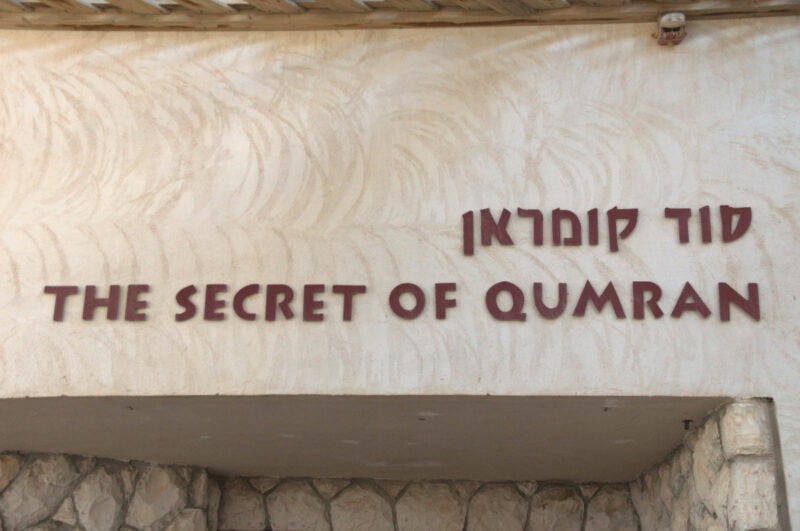
If you're up for a short drive, the Dead Sea's Israeli side is close to:
- Masada—A UNESCO World Heritage Site, Masada is an ancient fortification situated on a rocky plateau overlooking the Dead Sea. It was the site of a famous siege by Roman troops against Jewish rebels in 73–74 CE. Visitors can explore the ruins of Herod's palace, bathhouses, storerooms, and the remains of the last Jewish revolt against the Romans.
- Ein Gedi Nature Reserve—This oasis in the Judean Desert features two canyons (Wadi David and Wadi Arugot) with year-round streams, waterfalls, and lush vegetation. Popular hiking trails lead to the David Waterfall and ancient archaeological sites like a 4th millennium BCE Chalcolithic temple.
- Qumran National Park—The site where the famous Dead Sea Scrolls were discovered in 1947. Visitors can see some of the caves where the scrolls were found, as well as the ruins of an ancient Jewish settlement that was once inhabited by the Essenes.
- Ein Bokek Beach—Located along the Dead Sea shoreline, Ein Bokek Beach offers facilities like sun loungers, showers, and changing rooms, making it a convenient spot to experience floating in the Dead Sea's hyper-saline waters.
- Mount Sodom—This striking salt mountain south of the Dead Sea offers hiking trails and the chance to climb to its 176 m below sea level summit. It's traditionally associated with the biblical story of Sodom and Gomorrah.
- Neve Zohar—A small community with hot springs, a spa, and the remains of Zohar Fortress, a Roman-era fort overlooking the Dead Sea.
Attractions in Jordan Near the Dead Sea
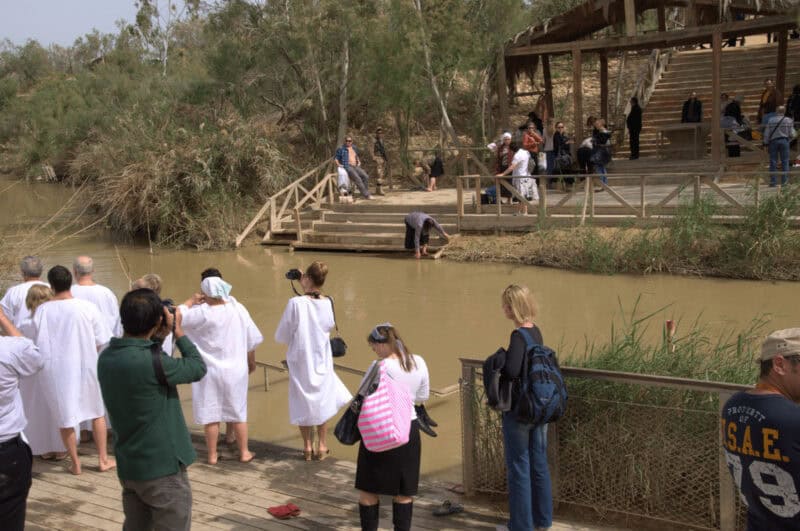
Along with Petra and the Dead Sea, consider adding these destinations to your Jordan itinerary.
- Panorama Dead Sea Complex—This complex offers panoramic views of the Dead Sea, a museum about the area's history and formation, a restaurant, and the Zara Cliff Walk trail.
- Bethany-Beyond-the-Jordan—This biblical location features the ruins of ancient churches and baptismal pools. It is believed that John the Baptist baptized Jesus here.
- Thermal Springs of Hammamat Ma'in—These natural hot springs have been renowned since ancient times for their therapeutic mineral waters. The springs are located in a scenic valley with waterfalls.
- Wadi Mujib—Wadi Mujib is a dramatic canyon with trails for hiking and adventurous activities like canyoning. The Siq Trail is a popular hike through the narrow gorge with water.
- Mukawir (Machaerus)—Built by the Hasmonean king Herod the Great, the ruins of the Machaerus fortress sit atop a mountain with views over the Dead Sea. Many believe that John the Baptist was executed here.
- Lot's Cave (Monastery of St. Lot)—This ancient monastery is carved into the cliffs and is believed to be the cave where Lot and his daughters sheltered after fleeing Sodom and Gomorrah.
Final Thoughts
I hope the travel tips in this article will help you enjoy the Dead Sea experience. Nothing on the planet is quite like feeling its unique waters caress your body and experiencing the healing mud for yourself.
Don't miss your chance to take a dip in the Dead Sea – it's a bucket list experience for a reason!
/ps

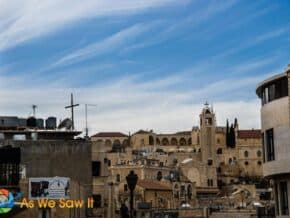
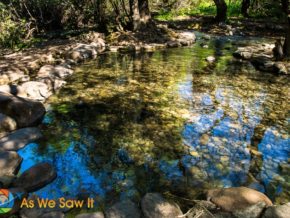
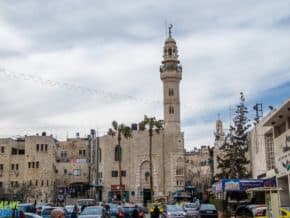
Why is this under Palestine?
Because it’s one of the top things to do in Palestine. It’s also categorized under Israel, but until you asked this I didn’t realize that Israel wasn’t a menu item. I’ve fixed that oversight, so thanks for your question! 🙂
I splurged on a mud wrap in the”healing” mud of Igalo, Montenegro. Four days later, my skin is still soft and hydrated, despite having traveled on two planes and a train to get back home! Swimming in the Dead Sea will happen!
Jealous! Montenegro and the surrounding countries are high on our list of wanna-go travel destinations. Out of curiosity, how much did the treatment cost?
I had a nasty scrape on my leg from tripping on the rocks at Tel Dan the day before. Consensus on the tour bus was equally divided between “Go in. The salt water will help it heal.” and “It will burn like mad!”. I went in slowly, wanting the Dead Sea floating experience yet ready to back out if the pain was too much. There was NO pain. In fact, my leg felt BETTER in the water! It is healing very well now.
What I couldn’t get over was how soft the skin felt after being in the water. All the Dead Sea products might work, but floating in the Sea is FREE!
Looks like great fun, although possibly painful on the feet!
Patti, walking on the salt crystals at the bottom actually didn’t hurt, it kind of massaged your feet. It was fun to try and use your feet to find big salt crystals and then your toes to bring them to the surface to see.